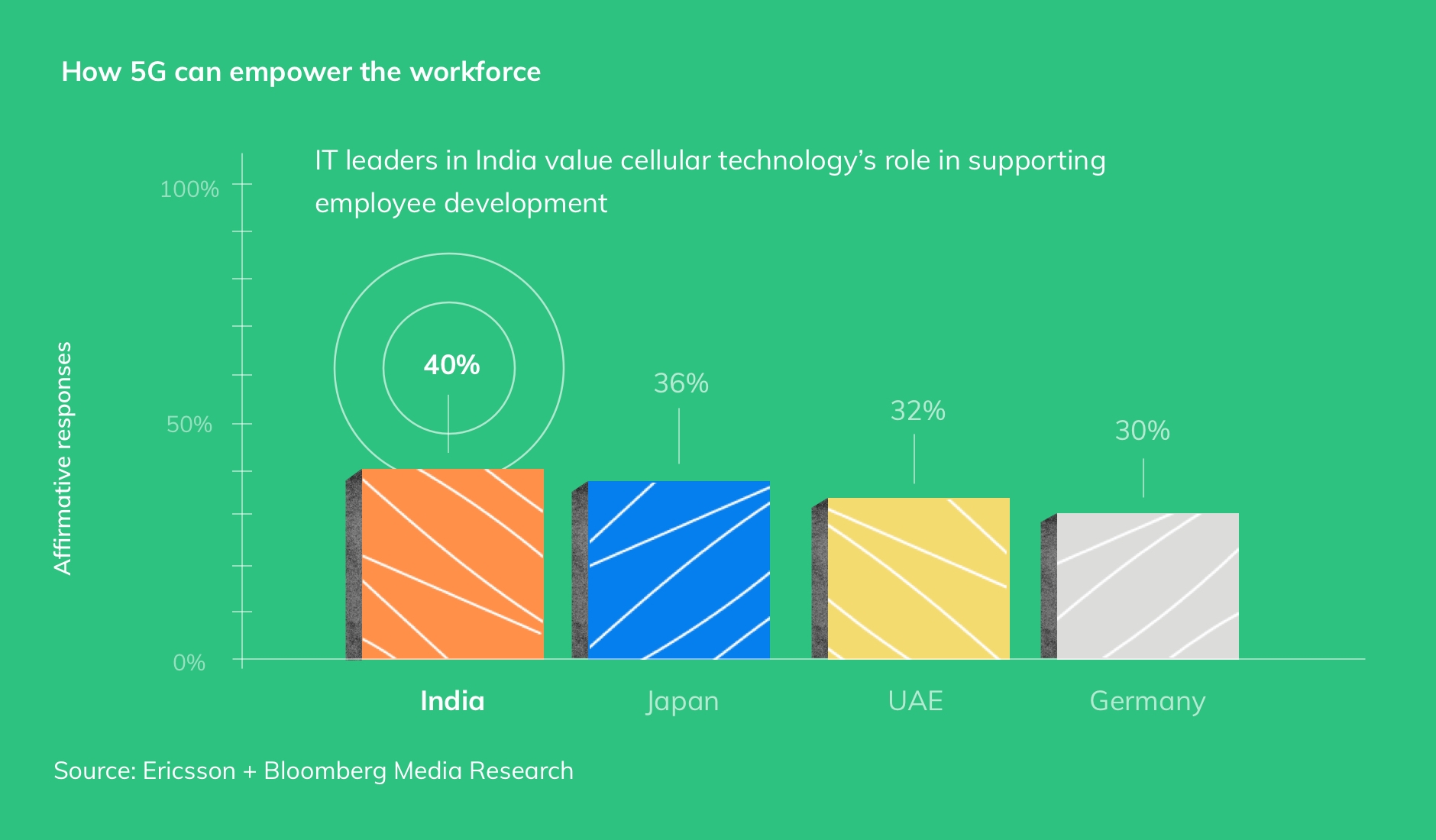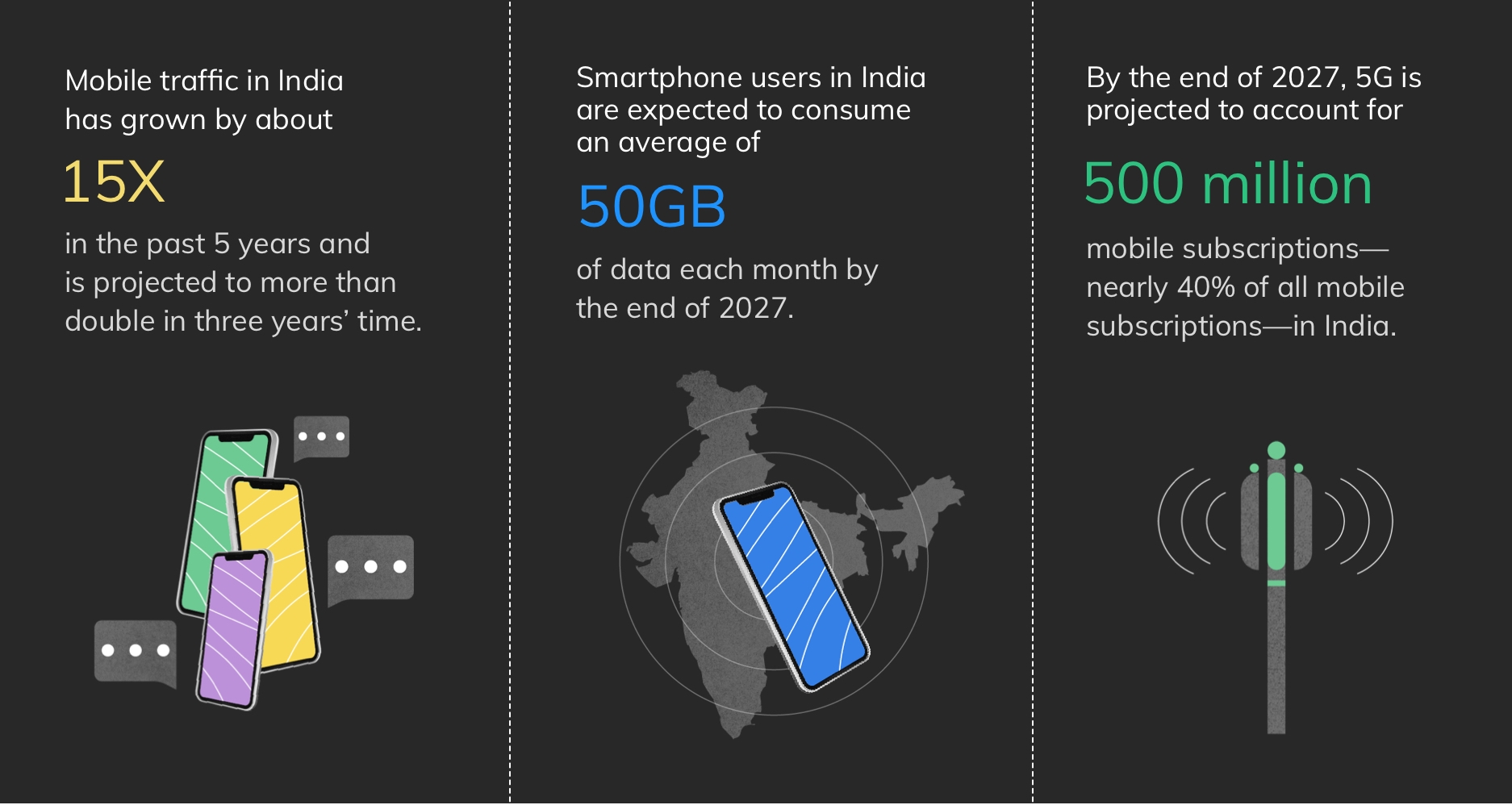India’s Next-Generation Manufacturing Ignites Job Creation
As India capitalizes on innovation, 5G will shape the future of its workforce.
India’s continued development of its globally competitive manufacturing hubs represents a significant opportunity to fuel job creation for its rising population, and the country recently showed its manufacturing might as it became the world’s largest manufacturer of Covid-19 vaccines.
Now, research indicates that India’s IT community is embracing the cellular technology that will power the factories of the future. A recent survey of IT leaders in India, Germany, Japan and the UAE, conducted by Bloomberg Media Studios on behalf of Ericsson, reveals that India-based respondents are more likely than most of their peers to prioritize cellular solutions today more than they did three years ago—second only to Germany—reflecting a fresh emphasis on connectivity following the disruptions of the pandemic.
George Mulhern, Head of Enterprise Wireless Solutions at Ericsson, says that India’s connectivity enhancements in industry are a good indicator of the country’s progress toward its economic goals.
“The conventional wisdom is that India is a manufacturing superpower that has yet to reach its full potential. The access to materials is there, the skill is there, and so is the entrepreneurial spirit. Embracing the technology just gets you that much further.”

Connectivity is essential for job creation and workforce upskilling
In 2021, Capgemini and Ericsson established a 5G lab in Mumbai to empower local innovators to incubate new projects at the frontiers of cellular technology, with a special focus on smart factories, smart utilities, smart cities and smart retail sectors.
The lab simulates the conditions of a private 5G network—an increasingly popular on-premise security feature of smart factories—and includes access to cloud- and edge-computing tools as well as next-generation hardware and software.
Launched as India upgrades its mobile network from 4G to 5G, the lab continues a long relationship between Ericsson and India that dates to 1903, when the company installed the country’s first telephone switch.
The job-creating potential of the 5G lab’s innovative incubator projects is more important now than ever. Half of India’s 1.4 billion people are under the age of 30; this is good news for the workforce’s receptiveness to the cutting-edge technology that will power the new economy, but represents a challenge for enterprises to create enough jobs to keep pace with the rising number of people reaching working age.
Tens of millions of Indians—among them a high proportion of women, new college graduates and farmers aiming to reinvent themselves—are expected to seek opportunity in non-farming sectors in the next few years. The recent Ericsson survey found that, compared to their peers in other countries, India’s IT community is more likely to see cellular enhancement as a means of supporting employee development.

“Thinking about 5G as an innovation opportunity is win-win. It allows the workforce to develop new skills to stay on the cutting edge and create opportunities for themselves, and it creates the business agility that India’s manufacturing sector has shown it has the appetite for, with its focus on expansion and job creation.”
The economic imperative to connect the unconnected
Looking at the broader research on 5G sentiment among India’s enterprise community, it’s clear that connectivity is top of mind as a value driver.

Source: Ericsson Mobility Report
An Ericsson-Arthur D. Little study projects that Indian mobile service providers will see incremental revenue of $17 billion as manufacturers, utilities, retailers and the wider ICT sector go big on 5G. Indian enterprises consider 5G to be the most important technology for their digital strategies, and India’s IT leaders are aware of where cellular connectivity can take their companies.
More than half of India-based respondents in the new survey see cellular connectivity shortening time to market for new products and services. India’s survey participants were also more likely than their global peers to recognize cellular connectivity’s power to enable real-time data analysis and visualizations—the game-changing intelligence that manufacturers of the future need.
“What’s great about these findings is they come straight from actual IT teams,” says Mulhern. “They’re the ones who evangelize technology upgrades within their organizations and who recruit others to the field at a time when new-economy job creation is a major focus for India. This trend and the momentum behind 5G will likely prove to be a powerful combination.”
